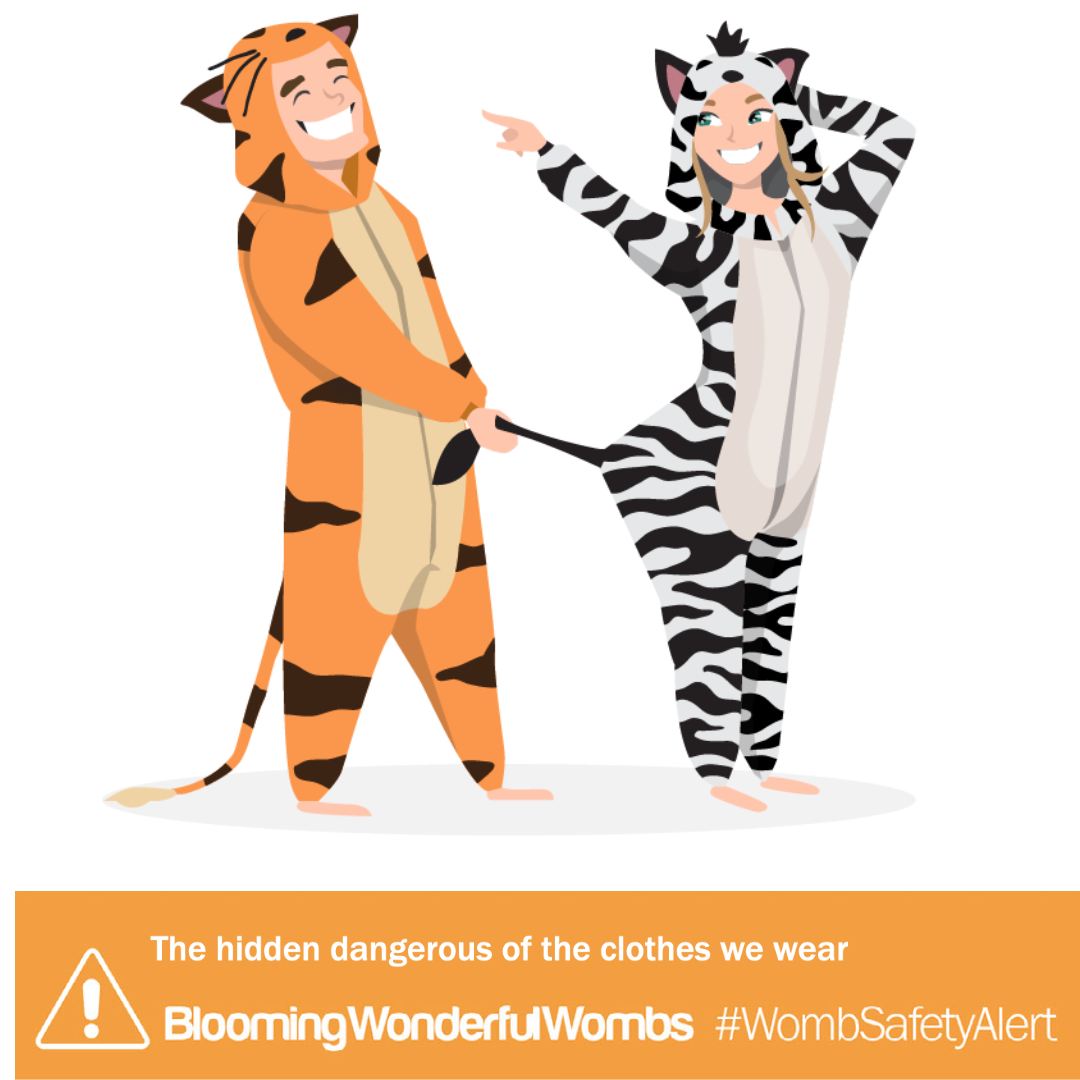
When I discovered the hidden dangers of clothing, I said: “Oh no! So I’m gluten free, dairy free, meat free! What else free do I need to avoid?” After reading this, you might want to start wearing organic clothes as well as consuming organic food and wine!
When I see 100% cotton on a clothing label, I perceived this to be pure, lovely and safe for my Blooming Wonderful Womb. Well that’s before I did before my research. You may want to forget the sexy undderwear this Valentine and go for organic instead! Thanks to Goop.com, I learned that cotton is grown with genetically modified seeds and sprayed heavily with Roundup. Roundup has also been found in organic hummus contains glyphosate which is an endocrine disruptor and also linked to cancer. Many other textiles contain other harmful chemicals and are really dangerous for us who wear them and for those who manufacture them.
What made me look into the dangers of the clothes we wear?
Well, between the recent lockdowns, I decided to take a trip into town and visited a well-known discount clothes retailer. I was knocked back by the pungent aroma of synthetic rubber! I thought that it can’t be good for the shop assistants to be breathing synthetic fumes all day. As always, this triggered a chain of thoughts, so much so, I bagan more research!
Onesie, Twosie, Threesie, here we go
I’ve always ponded upon the warning labels of loungewear! KEEP AWAY FROM FIRE! I say, KEEP AWAY FROM MY WOMB! I used the onesie illustration because it is fun and makes a point, but I’m not a lover of onesies for various reasons, mainly because they are normally 100% synthetic. However, research indicated that there is equal concern over the finishing processes of ‘natural’ clothing. Massive thanks to all those publications listed in this blog who have published heaps of useful information about this. It frees up my time to keep up to date with the hidden danger ingredients in food and cosmetics. Below are some material facts topics which caught my attention, and you may find interesting.
- Upcycling of plastic bottles into clothing! Most of us are proud of doing our bit for the planet and becoming eco warriors in some way. Last year, I purchased a soda-stream to reduce plastic bottles and reduce exposure to nasty stuff in plastic which is passed to the drinking water in high temperatures during storage. Can this nasty stuff be absorbed by our skin? I recommend you read this Ecocult article – it explains that that material from recycled bottles are actually safer for us than many of the treatments applied to natural clothing, including formaldehyde to prevent our clothes wrinkling.
- Viscose is considered a green fabric but Greenbiz.com says: “Viscose rayon is based on cellulose. That part may be ‘green,’ but the chemical used to make the viscose isn’t. It’s a toxic chemical called carbon disulfide.” Carbon disulfide is extremely dangerous to those who manufacture the clothing. Bamboo is also manufactured using this chemical, and I was disappointed to learn that there is actually no bamboo in bamboo material.
- We are better off buying clothes with TENCEL® Lyocell and Monocel® which is often made from eucalyptus trees.
- With Valentine’s Day around the corner. I researched underwear – the Bridget Jones sort! Here are the materials of a well known brand: Body: 51% Elastane, 49% Nylon. Gusset: 100% Cotton.
Did you know that elastane is made from polyurethane and polyethylene glycol. It is a block copolymer. Polyurethanes are plastics or synthetic resins which are hormone disruptors. Nylon tights are mostly made from a nylon Nylon 6,6— which is made from adipic acid and hexamethylene diamine. I’m pleased that the gusset is 100% cotton – but does it countain RoundUp? We need organic knickers! - I thoroughly recommend Madehow.com and Sewport websites if you would like to find out more about the materials we are putting right next to our largest organ – our skin!
- If you want a full list of chemicals used to make many clothes, look no further than Goop.com.
I am sharing this to make you more aware and informed decisions. If you buy 100% cotton, check the dyes and finishes. EcoCult shares some of the accreditations to help us make wise decisions: OEKO-TEX, GOTS, Fairtrade International.
I hope you enjoyed this blog, please help me share this so together we can prevent cancers.
